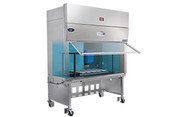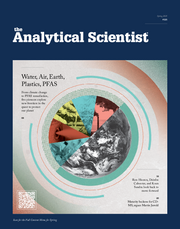This Week’s Mass Spec News
Henry Thomas | | 2 min read | News

Credit: Collage created using Adobe Stock images
Essential Reading
Breath Test for Silicosis Delivers Results in Minutes
William Alexander Donald, Professor of Chemistry at UNSW, discusses his team’s new breath-based diagnostic workflow for silicosis, a serious and often irreversible lung disease caused by inhaling fine silica dust. The new method bypasses the need for chromatography by combining mass spectrometry with machine learning analysis, delivering rapid, non-invasive results in less than two minutes – a potential game-changer for occupational health screening programs.
“Our goal is to capture a broad profile of volatile organic compounds in each breath sample, before applying our interpretable, lab-developed machine learning models to classify the breath profiles. As the test is both fast and non-invasive, it has the potential to screen anywhere from a dozen – up to over a hundred – workers per day…” Read more.
Microscopy Meets Mass Spec for Spatially Precise Subcellular Detection
A new analytical method, allowing untargeted, spatially resolved molecular profiling at the single-cell level – without the need for custom-built instruments – has been developed by researchers at Janelia Research Campus and the University of Wisconsin–Madison. The technique integrates tissue expansion with mass spectrometry imaging (MSI) to enable multiplexed detection of biomolecules such as lipids, metabolites, and proteins in intact tissues with unprecedented spatial precision. Read more.
The Analytical Scientist Presents:
Enjoying yourself? There's plenty more where that came from! Our weekly Mass Spec Newsletter brings you the most popular stories as they unfold, chosen by our fantastic Editorial team!
Worth Your Time
Matrix-assisted laser desorption/ionization time-of-flight MS is sufficiently sensitive as a biotyping method to identify Fusarium species causing head blight. Link
Determination of the β-monosaccharide head group of cerebrosides, a class of lipids, via collision-induced dissociation-based tandem MS prior to high-resolution cyclic ion mobility spectrometry-based separations. Link
Vilenne Frédérique and colleagues review definitions of spectral quality, normalization and future directions of MS-based proteomic research. Link
A new method enables eight sequential images to be taken from the same tissue section – including lipids, metabolites and peptides – via MSI. Link
Probe electrospray ionization MS combined with machine learning effectively forecasts lymph node metastasis in tissue samples of papillary thyroid carcinoma. Link
(Mass) Spectacular and Strange
Smells Like Screen Spirit
My computer has no nose, how does it smell? With OGDiffusion!
Painful dad joke aside (apologies), researchers at Science Tokyo have developed OGDiffusion, an AI model that uses mass spectrometry profiles to automate fragrance creation. Following analysis of 166 essential oils using gas chromatography-mass spectrometry, the team trained their diffusion model to generate new mass spectra for nine custom scent profiles such as “citrusy” or “woody.” Using non-negative least squares, the system is able to calculate the ideal essential oil blend to match the AI-designed scent in a simple (and fully automated) process.
"By automating the generation of mass spectra corresponding to desired odor profiles, the OGDiffusion network offers a more efficient and scalable method for fragrance creation,” stated Takamichi Nakamoto, lead author of the study, in a recent press release.
If you’re interested in finding out more about the trials and tribulations associated with digitizing scent, we recently spoke to Osmo’s Laurianne Paravasini about how her team is approaching the task. Check it out here!
Deputy Editor of The Analytical Scientist

















